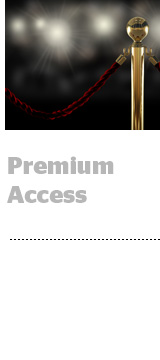
As marketer concerns about brand safety, transparency and data ownership continue to grow, so do their investments in programmatic guaranteed deals and private marketplaces (PMPs).
By 2020, four out of every five programmatic dollars in the United States will flow to PMPs or guaranteed deals, according to eMarketer’s latest programmatic forecast released Friday.
Brand safety is a big catalyst behind that shift, as are advertisers who want more control over their audience data, said Lauren Fisher, principal analyst at eMarketer and author of the report.
“If marketers want more control over their data, they’re going to choose set-ups where they feel in control,” she said. “They’re not just going put premium customer data in the open market. They’re going to put guardrails in place.”
This year, programmatic guaranteed deals will reach $27.5 billion to account for 58% of all programmatic display spend in the United States, eMarketer predicts. PMPs will grow 21% to reach $13.5 billion, or roughly half of all real-time bidding spend. Meanwhile, the open exchange will grow just 8.9% to $12.8 billion.
Despite the numbers, marketers aren’t shunning the open exchange altogether.
“We’re continuing to see growth in the open market every year,” Fisher said. “Dollars are just moving faster to PMPs and direct deals. That’s reflective of this environment where buyers want more control and a relationship with the seller.”
There are still many use cases where the open market makes sense, Fisher said, such as when marketers need quick access to inventory or want specific types of inventory. Many marketers find value on the open exchange through header bidding, which gives them access to impressions that were only previously available through direct deals.
Other marketers use the open marketplace as a testing ground to find new inventory and publishers with whom they can create private or direct deals in the future.
“One benefit [of the open exchange] is the variety in supply,” Fisher said. “When something starts to really work, you can take the information and try to do a private marketplace. And it’s a great place for publishers to identify advertisers who bid on a lot of their impressions.”
Still, as marketers demand more control over their audiences and spend, with some even going so far as to take programmatic in-house, the shift to more controlled environments is inevitable.
“Programmatic really started as an automation play,” Fisher said. “That changed as advertisers looked to put audience data in a buy. That’s driving a lot of the moment behind premium guarantees, because they want more control over where that audience is deployed.”
Overall, programmatic ad spend will grow more than 30% this year to reach $47.4 billion, eMarketer predicts. By 2020, programmatic ad spend will reach $69 billion to make up 86% of digital display spend.
Fisher will present this data at AdExchanger’s Programmatic IO on October 15.
This post was syndicated from Ad Exchanger.


More Stories
Island Gelato partners with Impact PR
Meta More Than Doubled Revenue From its AI-Powered Ad Tool
How A Digital Media Agency Built Its Own AI-Powered Contextual Targeting Tool